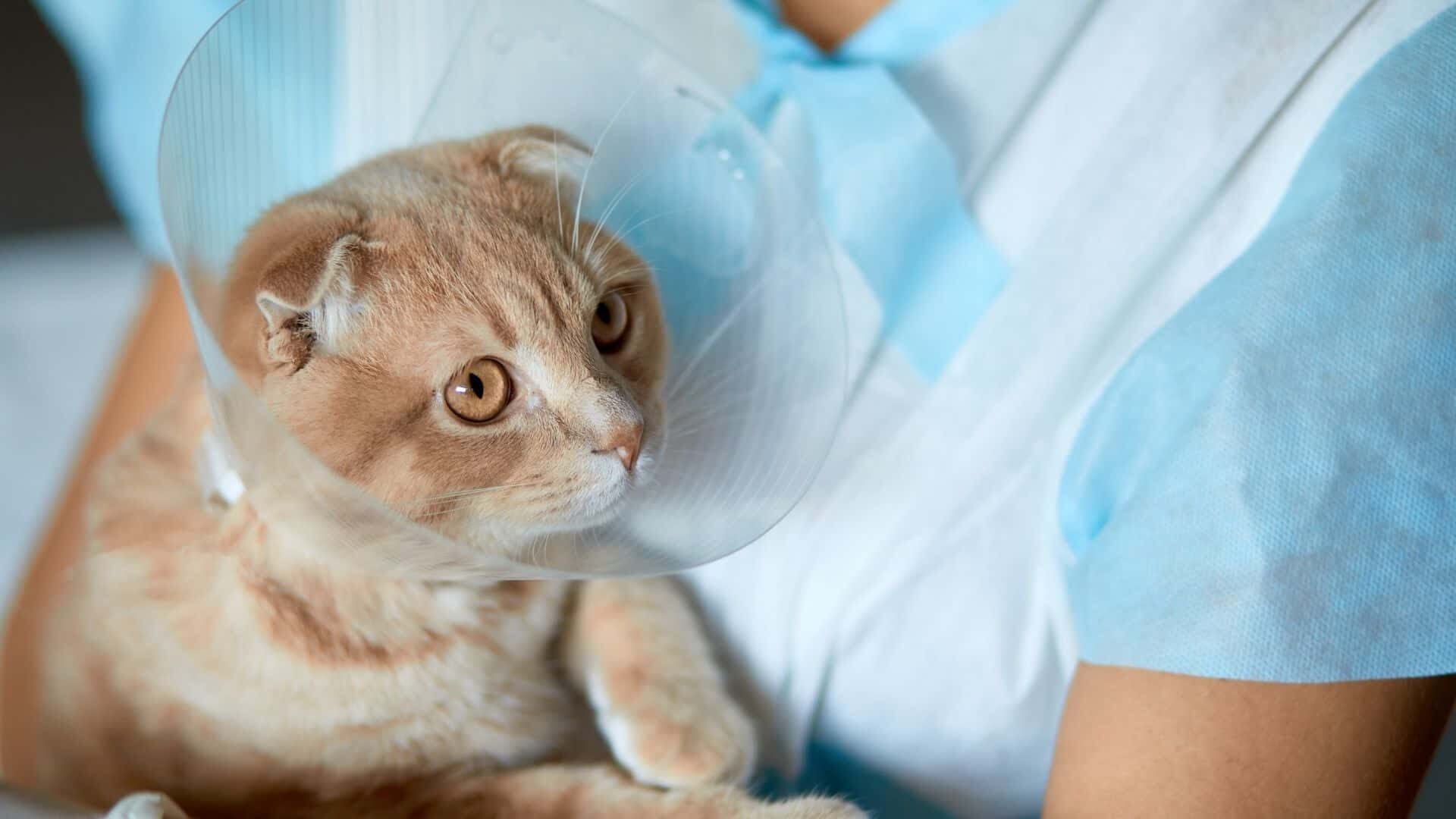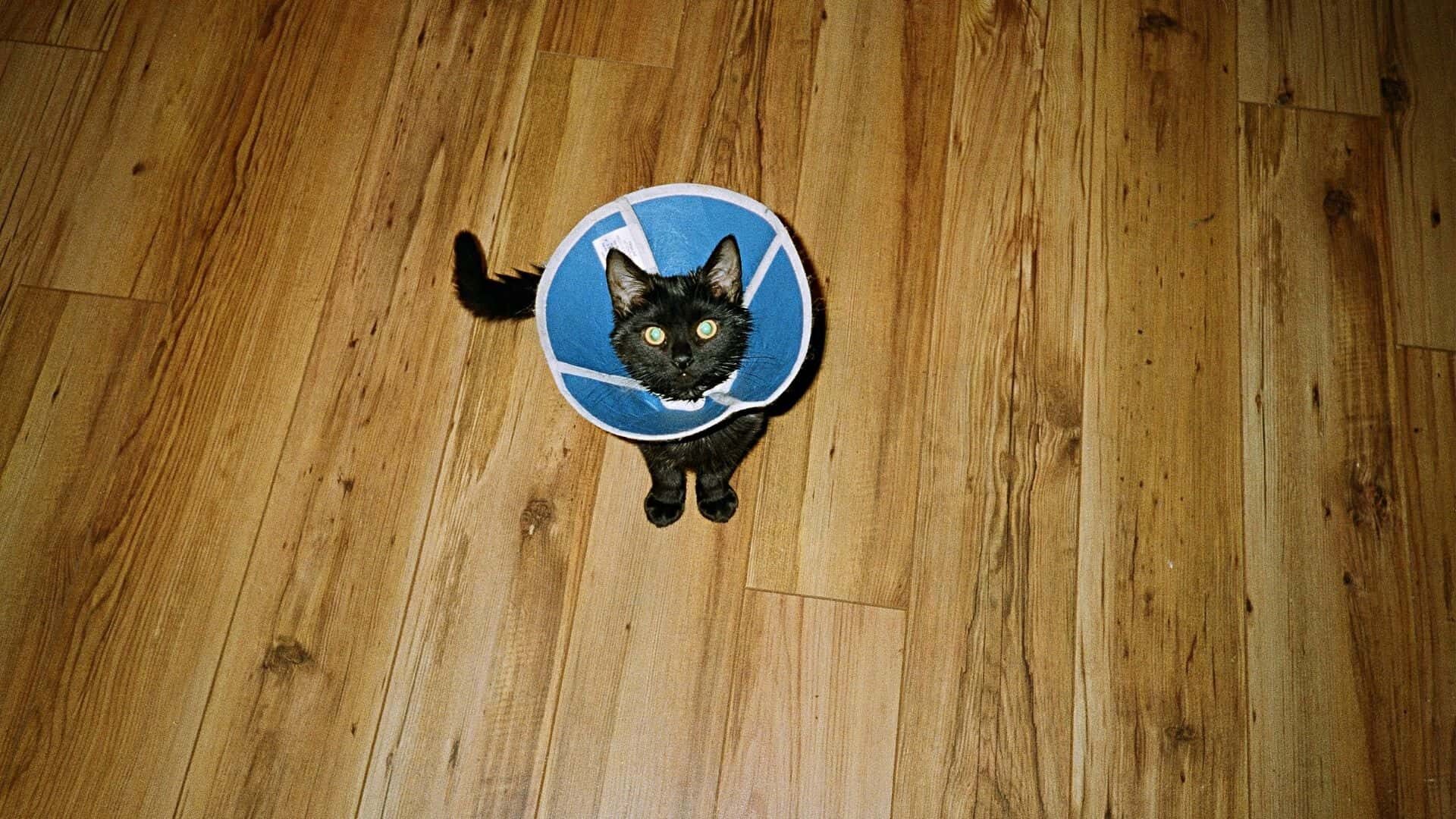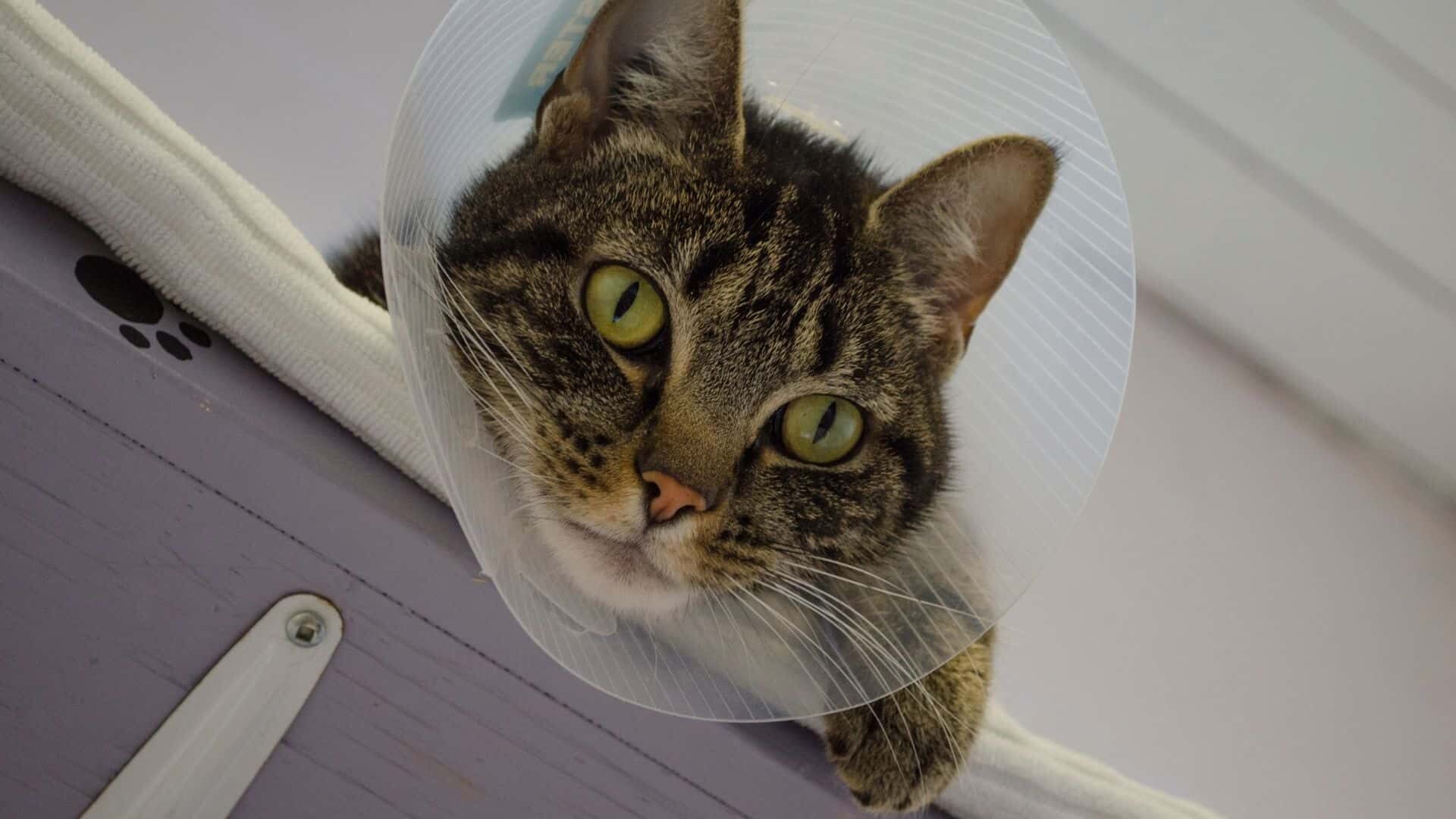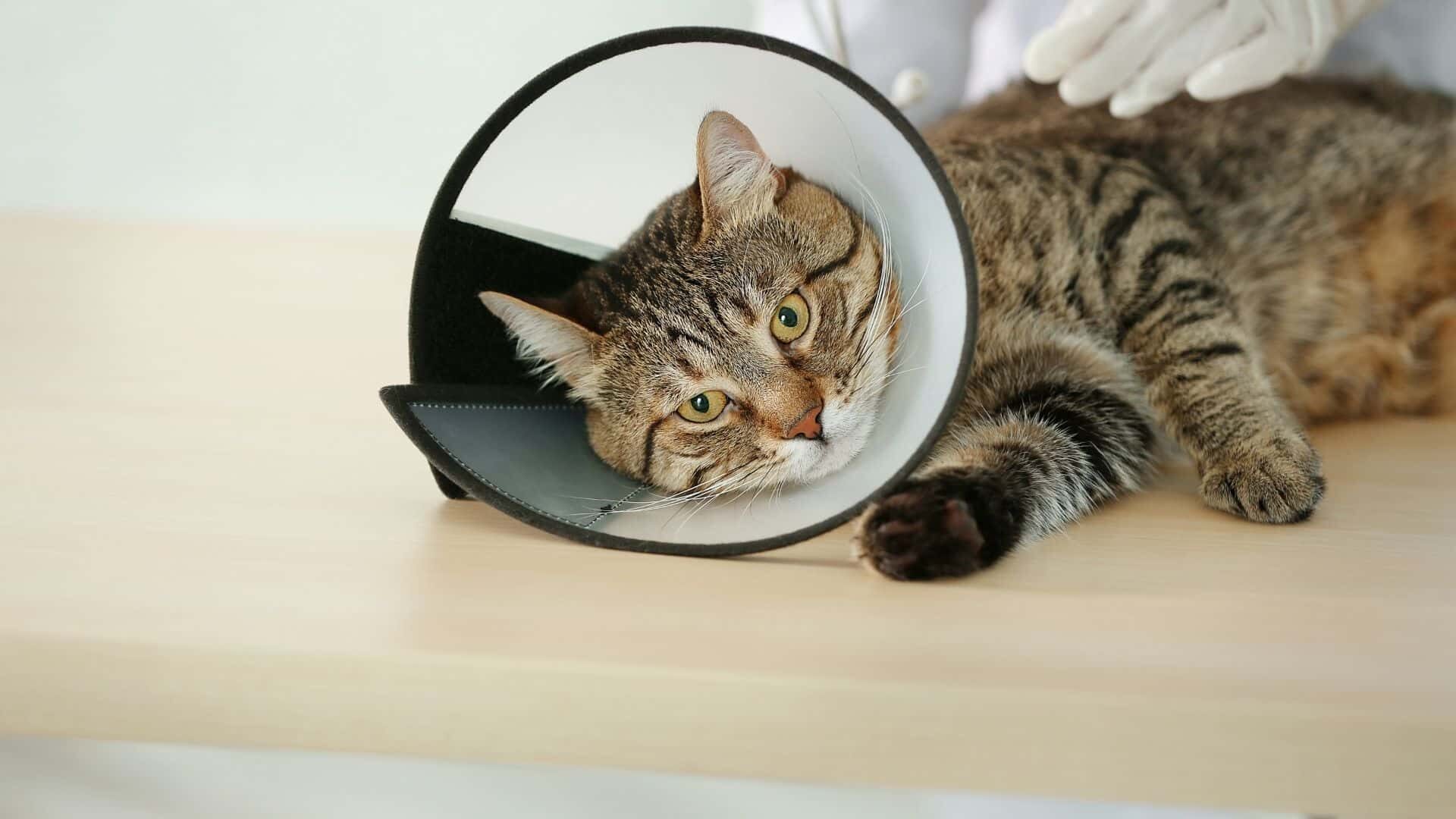Fluffy have just been released from the veterinary hospital following a medical procedure or surgery. You will be provided with and expected to use a basic but crucial safety device along with care instructions and drugs to take home.
Injured, swollen, or surgically-stitched parts of your pet’s body will be protected from licking and scratching by the use of a device like this one. As its name implies, it’s there to keep the animal from injuring itself
Yes, we’re talking about the infamous “Elizabethan collar,” which is named after the ridiculously high collars worn in the Elizabethan era (think Shakespeare). Cone of shame, dunce cap, satellite dish, lamp shade, party hat, etc. are other common names for this item. It should not be confused with an electric shock collar. Simply put it around the animal’s neck, surrounding the head and forming a protective barrier between the head and mouth and the rest of their body.
What is a Cat Cone?

Learn more about cat cones before we discuss ways to keep cats from removing them.
Your veterinarian may prescribe a cat cone as a means of preventing further harm to your cat. In addition, the cone will keep your cat’s face from being scratched by her claws. A cat’s need to scratch after eye surgery or facial skin surgery can be alleviated by using this product.
There are open-ended cones for cats called cat cones. Elizabethan collars, Buster collars, E-Collars, and other comical labels like “cone of shame,” “lampshade,” and “pet radar dish” are some of the names given to these apparatus-shaped devices. Cat cones, despite their amusing titles, have a serious purpose. You can use them to protect your cat from a painful area. For the sake of your cat’s well-being, it’s necessary.
As far back as the 1800s, veterinarians would hand out homemade pet cones to their patients as a service. Created from cardboard, plastic sheets, or malleable cardboard. There is a wide selection of commercially available cat cones on the market nowadays. You can get them from a pet store or online. Soft-plastic and soft-cloth cones are also available if your cat refuses to wear one. Cones come in all shapes and sizes, and you can learn more about them here.
What is the purpose of a cone for your cat?
Cones are used to stop cats from licking or gnawing certain parts of their bodies. Can discourage cats from chewing on the stitches of recent surgeries or self-mutilation.
Using the cone can keep a cat’s claws and paws off of your face. If your cat has just had eye surgery or has a skin lesion on their face that they are prone to scratching, this can be a lifesaver.
Using a cat cone as a stand-alone solution isn’t going to work. If your veterinarian tells you to, you should only use it for a short period of time. Use a cat cone to stop a cat from scratching or licking its body, not to stop it from doing so. The first step in treating Kitty’s condition is to take her to the veterinarian for an in-depth examination and diagnosis.
Getting Your Cat Used to a Cone
What You’ll Need:
- Catnip or canned food
- Toys for cats
- The cone
Do not attempt to put the cone on your cat yet; instead, hold it or set it in its general proximity. Offer your cat a treat or a toy any time they sniff it, touch it with their nose, or even just gaze at it. This step is all about getting your cat used to the cone and establishing a pleasant association with it. Watch Mia, a member of the Preventive Vet team, get her cat Mazel ready for the procedure:
Get your cat used to wearing and removing the cone. Using a spoon or a wooden stick, such as the tongue depressor, put some of your cat’s wet food on it and reward them for wearing it. Offer a little piece of wet food or a treat after they wear the mask for a short period, even if it is only a few seconds. In this video, Mazel shows off his first attempt to wear it:
Gradually extend the duration the cone is worn. Shorten the period of time they wear the cone or return to the beginning of the process if they freeze, try to back out of it, or paw at it in an attempt to remove it. Put on your cat’s favourite toy and play with them as you feed them or give them a treat.
If your cat is reluctant to move around while wearing the cone, try luring them with a treat, a wet food lure, or a toy. To assist them become used to the cone’s feel and how it impacts their body awareness, you can lead them up to various perches. Your cat will soon be able to go about their daily routine with their cone on if you continue to praise and reward them with food or play.
Why does my cat keep ripping off cat’s cone?

There’s no need to panic if your cat freaks out when you introduce the cat collar. Your cat may require some extra time to adjust to new situations. Here are some helpful hints for you and your pet:
1. Tie the cat cone around their neck
You may see holes or openings at the bottom of the cone. In order to tie gauze or a piece of fabric to the collar, owners need these apertures. You can attach the cat cone to the cat’s collar with a simple knot. Using this method will ensure that your cat’s head or scratching don’t fall out of the collar.
2. Opt for a softer one
Trimline, a producer of soft cones, is one option for pets who find them uncomfortable. It is possible to wear these cones in either the conventional “up around the head” or “bell around the body” style. Because it doesn’t obstruct their vision or hearing, some cats prefer to sleep with their heads down. In order to ensure that your cat is unable to access the sutures while wearing this type of collar, I recommend using it in the turned down position while you can keep an eye on her.
3. Protective shirt
Another approach is to wear a protective shirt. Because your cat has already had the surgery, you probably don’t want to wait for a commercial product to arrive. A garment like this can be made at home by the wearer.
Cut four holes in an old T-shirt for the cat’s legs. Pin/sew the shirt shut around the cat’s spine when it’s wrapped around the animal. Your belly should be a flat piece of fabric without any seams near the wound/suture.
To keep your cat from escaping, the garment should be snug but not so tight that it restricts blood flow. The wound should be checked for infection at least every 8 hours while the shirt is on; also keep an eye on your cat to ensure she doesn’t get snagged in it.
There is no need to worry if she licks or bites the shirt, but if she bites the stitches, you may want to reinforce the area with a heavier fabric (like denim). You can expect the fabric to stretch and move about, but that’s normal. To keep the shirt on and to conceal the sutures, simply re-pin it as necessary.
What are the different types of cat cones?
Cat cones come in a variety of sizes and materials, so you may find one that fits your cat’s needs. As a result, your cat may take a shine to a cat cone. You may rest assured that your cat will not hurt itself while wearing a quality cat cone. Some of the several kinds of cat cones include the following:
1. An old-fashioned cat cone
This is by far the most frequent form of cat cone. It is easy to identify because of its spherical and sturdy appearance. A softer edge on some traditional cat cones ensures that your pet’s neck won’t be poked. Transparent plastic cones can also be made to aid your cat’s eyesight. The length of the typical cat cone can be trimmed and filed by your veterinarian.
2. Squishy cone
Soft foam and vibrant fabric adorn these cones. Protective cones for cats are more comfortable with these. While the soft cone is safe for your cat, it could be damaged by a hard item. Feline owners are required to keep an eye on their pets when they wear a soft cone for their protection.
3. Decorative fabric cone
Cones made of soft cloth are popular with some cats. With a drawstring, the cat wears these. Some cats may not like the drawstring attached to their collars, so they recommend attaching a fabric cone to the collar instead. Your cat may be compelled to remove the collar if the strings cause irritation or itching on her neck.
4. Cat e-collars that inflate
They are perfect for fussy cats because they are lightweight and less obstructive. Inflatable cat e-collars are comfy for cats, and they’re a big hit with pet owners.
How to find cat cone for your cat?
Choosing a cat cone is a tough decision.
Your cat’s cone should snugly fit around the neck of your feline friend.
Your cat’s neck should be able to fit one to two fingers between its neck and the collar, but it should also be snug enough to keep it in place.
The cone’s rigid edges should not exert any strain on your cat’s neck.
You should place the cone just above your cat’s nose. Aside from that, it all relies on the section of your cat’s body that needs protection.
E-collars for cats: how to keep them on

Using an e-collar, or “cone of shame,” is a way to keep a pet from getting into a restricted area.
If your cat has recently had surgery, for example, he should be kept away from the surgical site. To avoid infection or possibly remove the sutures, he must be restrained. That could lead to a trip to the veterinarian at the very least. Your cat can also inflict serious harm.
Tips for keeping a cone on your cat if he’s suffering from a medical condition:
1. The cone should be known to your cat
You’ll have plenty of time to get your cat used to the cone if his treatment is scheduled rather than last-minute.
Purchase or borrow a collar, if at all possible. Once you have a cone, give your cat a few minutes each day to get used to it. Until the day of his surgery, follow the measures mentioned below.
2. Allow your cat to check out the collar on its own
You can leave the collar in a place where your cat spends a lot of time and see what happens. Treat your cat whenever he approaches the collar to inspect it.
Make sure your cat isn’t afraid of the cone by placing a treat or a toy near it. Praise and reward your cat whenever he comes close to the cone.
3. Put your cat’s collar on
After a few days, you can try out the collar on your cat and see how it goes. Using a plastic spoon or tongue depressor, prepare some of your pet’s favourite wet food and place it on the spoon.
Once he’s had his cone put on, give him the sweet treat. Remove the collar and wait a few seconds before doing so. Increase the time your cat spends wearing the collar each day as you practise this technique.
Watch How to keep your cat from ripping out its stitches | Video
If the cat keeps ripping the cone off, what should I do?
Keep a look out for him, please. Reapply the cone TIGHTER the next time he does anything irrational like rip out his stitches. My cat was just neutered today, and he’s been removing his cone all day.
Is it safe for my cat to wear a cone while he sleeps?
There is no restriction on what a patient can or cannot do while wearing the cone. To put it another way, they will get acclimated to it faster if you are tougher with the cone. You may rest assured that your pet will have no problem with you enforcing the rules because pets do not keep grudges…. It’s for the benefit of both of you.
Keeping a cat’s recovery collar on is a challenge, how to do it?
Take the caps off for them if you can. Your pet’s neck should be kept dry and free of moisture in order to avoid generating hot spots and infections. To secure the collar, you can use medical gauze, but if your pet already has a collar, you can use it instead.
What if my cat refuses to wear her cone?
For whatever reason, some people won’t leave the cone on. A number of animals can spread or prolong an infection. As a result, they might need another visit to the vet to have their sutures repaired, or potentially another anesthetic in order to do so. Surgical implants and casts and splints might be damaged or dislodged.
With no cone, how can I keep my cat from licking my wounds?
To avoid the “cone of shame,” you can use inflatable collars, E-collars, or neck brace collars. You can prevent licking by covering the incision with a soft fabric fastened by medical tape. Keep pets from licking their wounds by engaging them in other activities.
Conclusion

Even if you think your cat is accustomed to wearing an e-collar, never leave him unattended with it on. Still, he’s going to try to get it off. You should be there to reattach it if he is successful.
You are perfectly entitled to be upset about your cat’s cone. Because you care so much about your pet, you’re absolutely fine with that. However, allowing him to do so would be a grave injustice to him.





